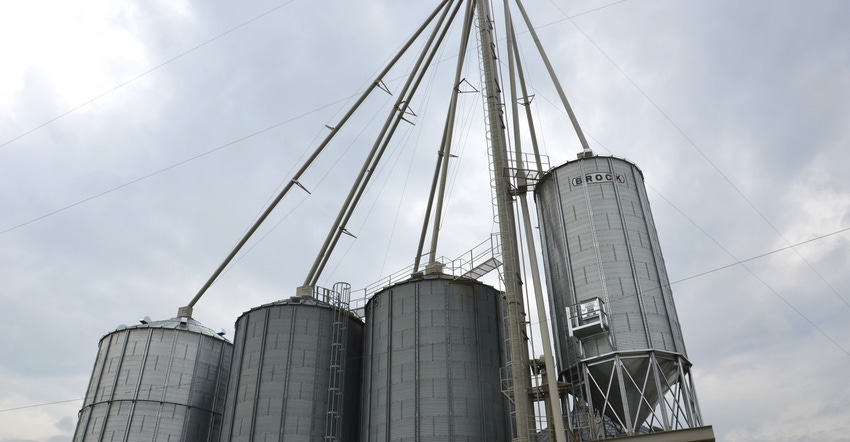
When David and Gloria Sommer and family expanded their grain system recently, they added two grain bins and a new leg. That helped increase both capacity and their ability to move grain faster. But another addition to the system made at the same time was also important, David Sommer says.
“We added a new 9,000-bushel wet holding bin, and also have another 20,000 bushels of wet holding capacity,” Sommer explains. “We will eventually upgrade to a bigger dryer, and we made sure we could hold enough corn to supply the dryer when we make that investment.”
Sommer, Berne, Ind., says the farm can move 8,000 bushels per hour with the new leg that was installed during the upgrade process. They can dump a semiload of corn coming out of the field in about 10 minutes.
Having enough wet holding capacity is key to allow trucks to unload and keep corn away from the combine, he says. “Now, two trucks can keep up with a 12-row combine in good corn and let the combine keep harvesting,” he notes. The 9,000-bushel tank doubles as a loadout tank when hauling grain.
The Sommers, named Master Farmers this year, look at the upgraded grain system as an investment for the next generation. Their son and son-in-law are important parts of their dairy and grain operation.
Size matters for grain setup
One state to the south, Caleb Ragland reached the same conclusion about wet holding storage capacity. Working with Taul Equipment, a local GSI dealer, he planned a major expansion and stand-alone grain center a few years ago that included a 24,000-bushel bin to act as wet holding capacity. It supplies corn to a TopDry drying system. Ragland farms near Magnolia, Ky.
“We didn’t want to allow the size of the wet holding tank to limit how fast we could unload out of the field,” he explains. “Our goal in building our grain center was to make it efficient in many ways. One of those ways is allowing us to move corn quickly enough that we can keep the combine running in the field.”
Ragland didn’t decide he needed a large wet holding bin without input from others. He toured grain bin centers on farms throughout central and southern Kentucky before making decisions about how to put his system together.
One sentiment he continuously encountered was that people said if they were doing it again, they would install a bigger wet holding tank. That resonated with him when he decided on a large tank to handle corn coming out of the field in his operation. As a result of his planning, both in sizing the wet holding tank and in designing the rest of the grain center, he also can keep up with the combine running corn in the field.
Ragland and his wife, Leanne, farm with his dad, David, and brother Josh. The farm also includes a large hog enterprise. Learn more about how he planned his grain center in advance in an article coming tomorrow on the website.
About the Author(s)
You May Also Like




